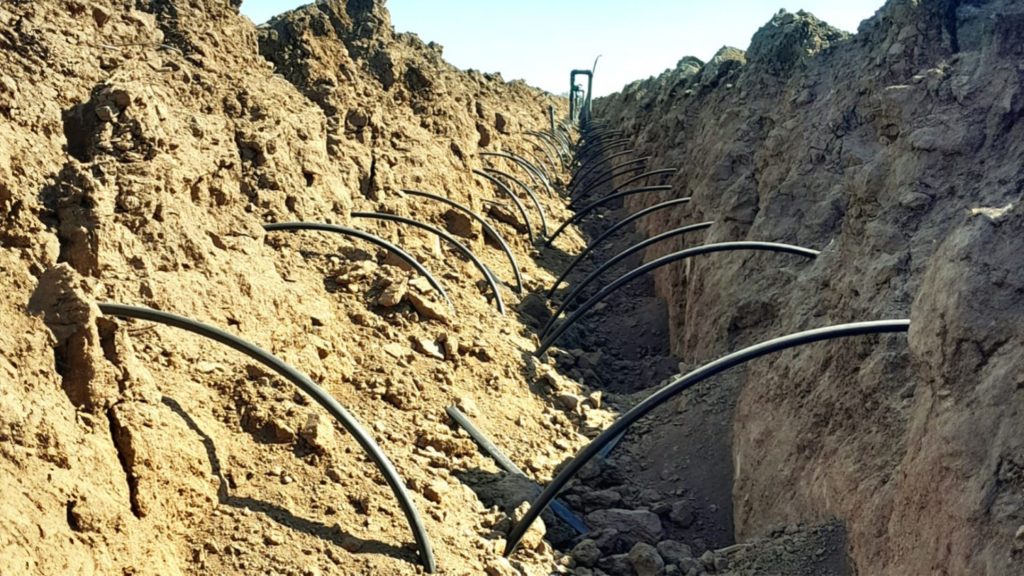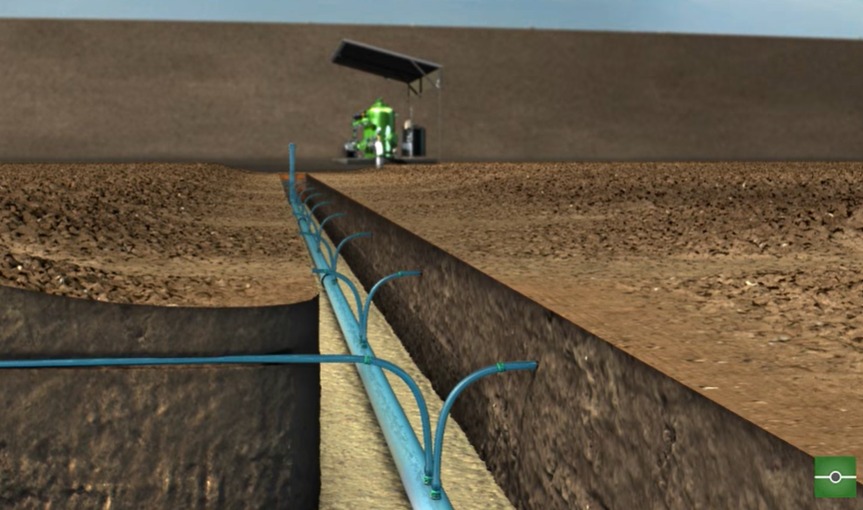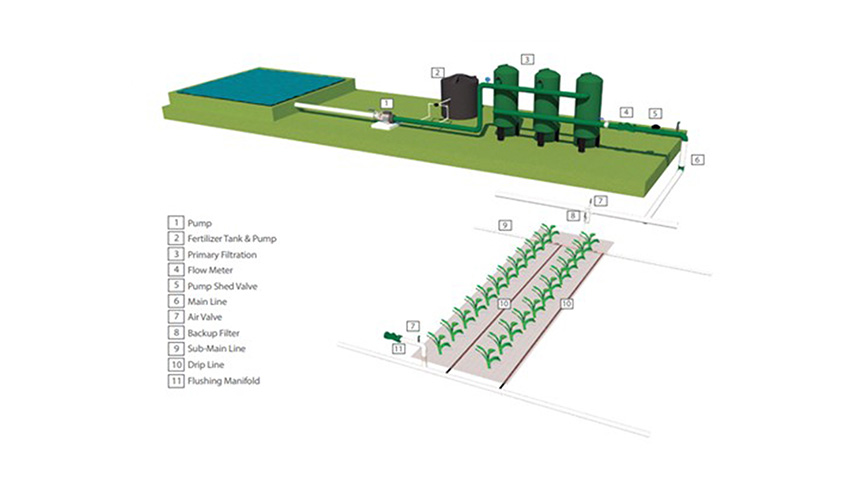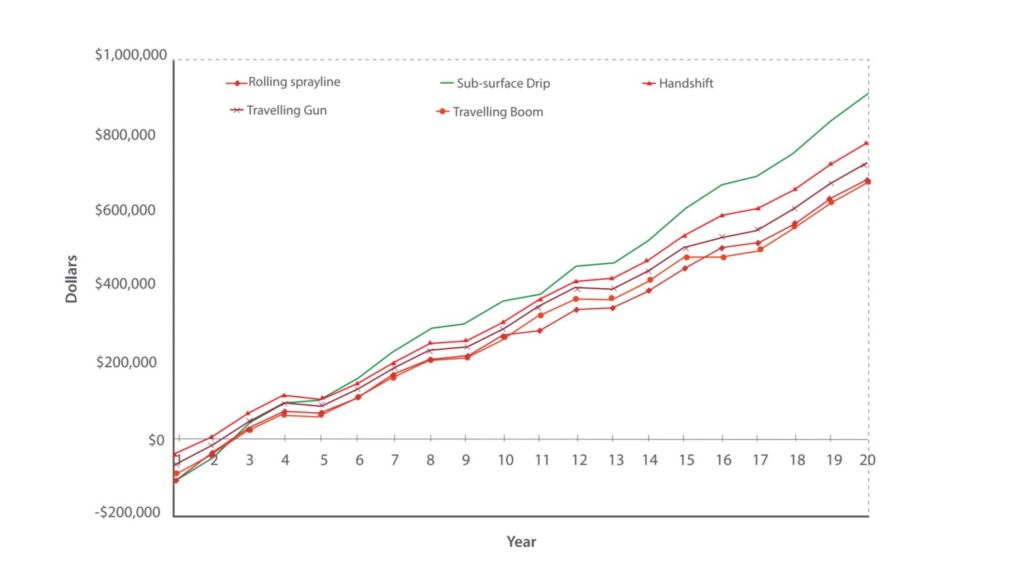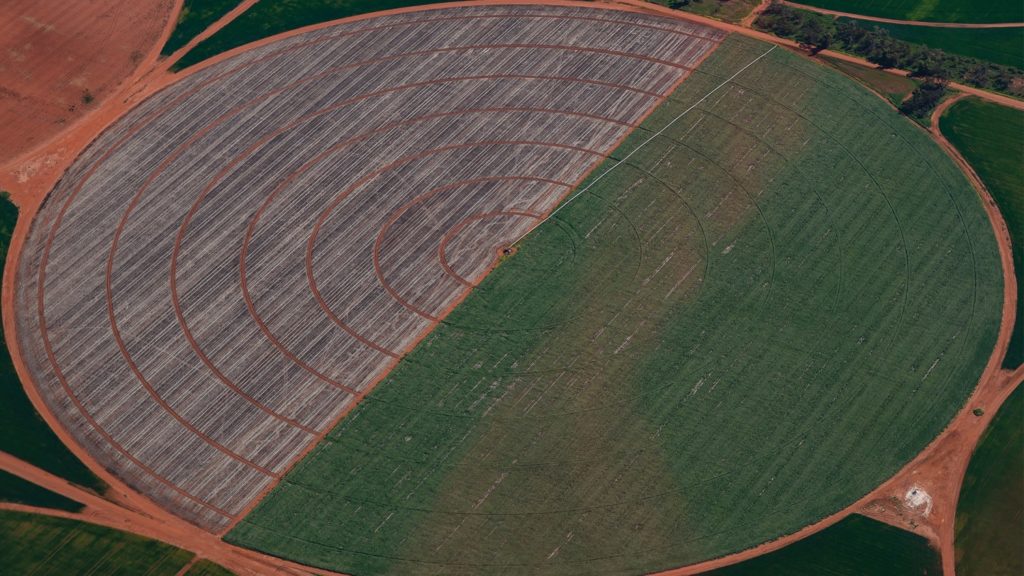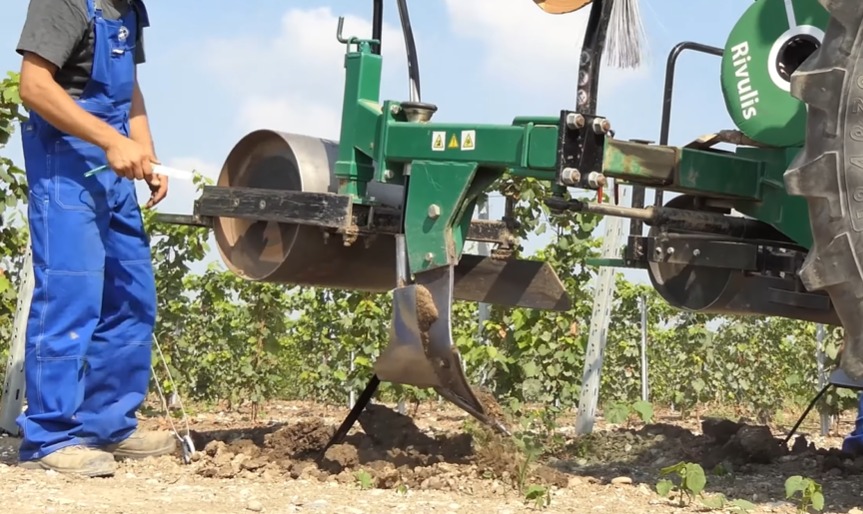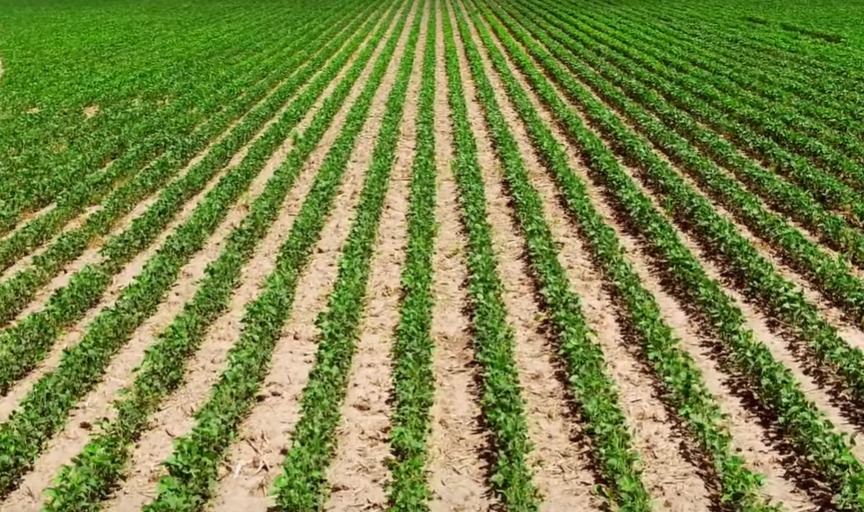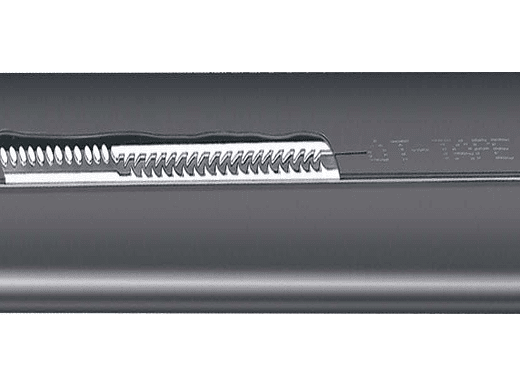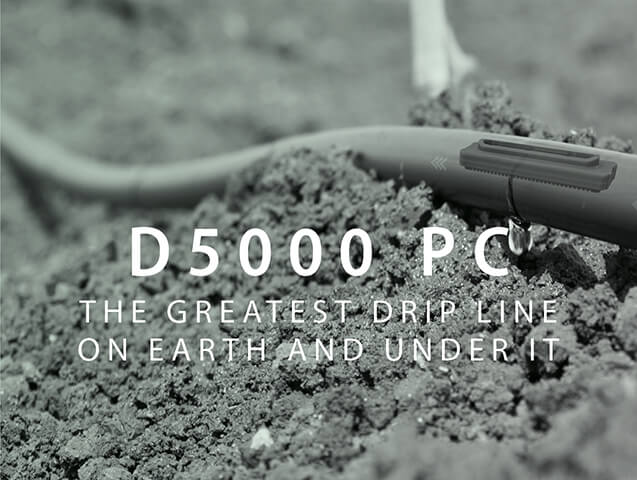
Subsurface Drip Irrigation (SDI)
What is Subsurface Drip Irrigation?
As the name suggests, subsurface drip irrigation, or SDI for short, is drip irrigation applied underground.
Shallow Burial: is when the drip line or tape is buried only a few centimeters below the ground level. Doing this allows growers to achieve many of the benefits of subsurface irrigation while overcoming disruption to irrigation lines from other factors, like wind disturbance.
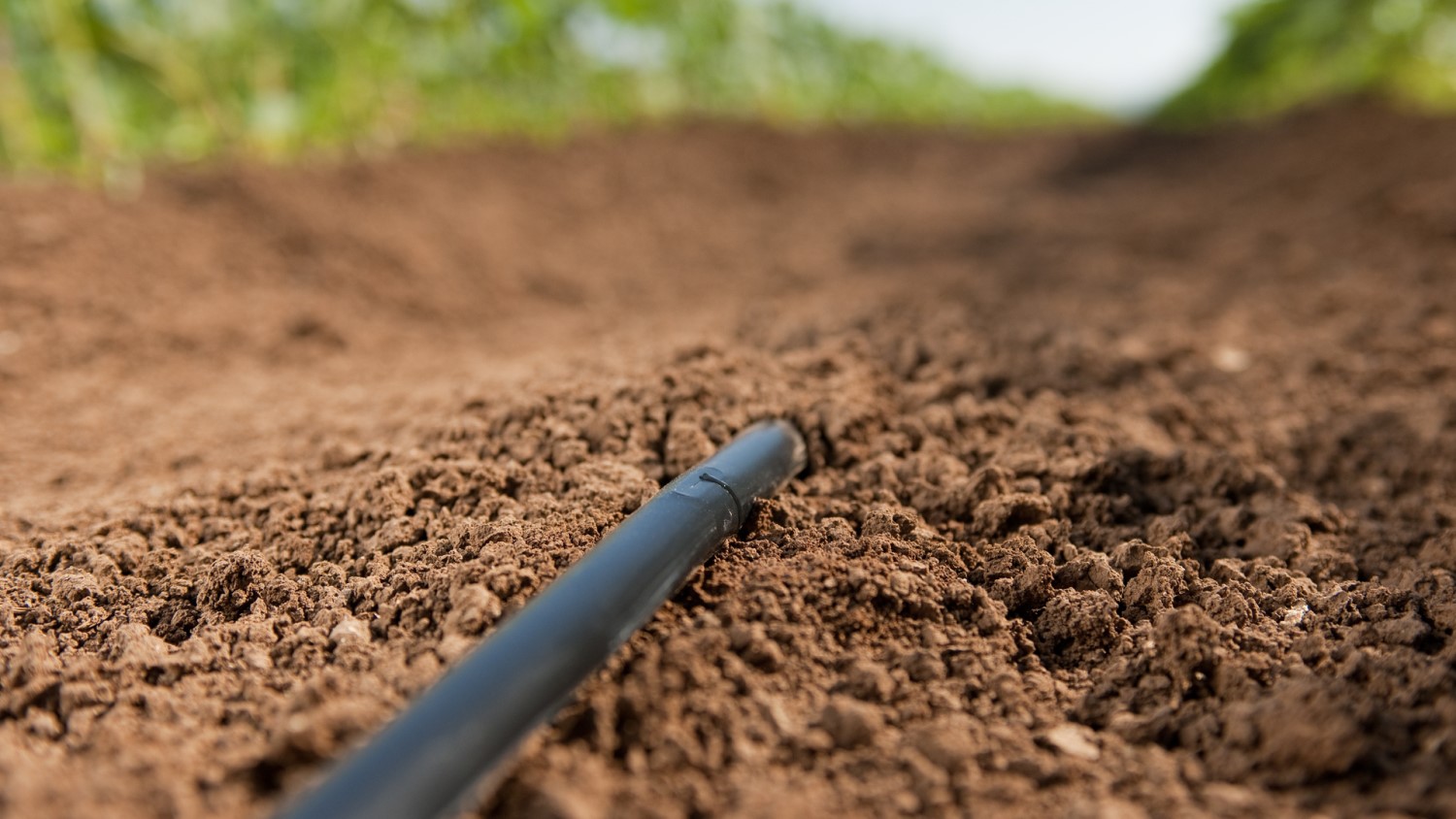
Deep Burial: is when the drip line or tape is buried at least 10cm (4in) or more below surface level. This is typically done for multi-season use where the same drip line or tape works for anything from a few years up to over 20 years in some cases.
How Does Underground Drip Irrigation Work?
Key Components of an SDI System
Filters & Valves: Optimal water filtration is the first vital step to ensure the process works optimally and that your plants get the best quality water. Filtration is the barrier between contaminants and your drip laterals, offering protection, clogging, and maximizing system longevity.
Control Valves, Air Valves, Fertigation & Monitoring Equipment: Valves, fertigation, and monitoring equipment safeguards, and through automation, helps you end-to-end manage your irrigation structure. Automated fertigation through SDI is a key labor-saving measure, with just the push of a button remotely an irrigation cycle, that includes a preset fertigation application, can be set in motion.
Drip Laterals: These are the lines or tapes that carry the water underground. It pays to make the right choice in drip laterals. Choose an inferior option and you will pay for years to come; a superior option will provide uniform application so that all crops receive adequate water and nutrients means you will reap the rewards for years to come. Drip laterals are built to be highly resistant to clogging, ensuring many seasons of trouble-free use.
Benefits of Using Subsurface Drip Irrigation
Efficient Water Use
Compared to sprinkler irrigation, where water evaporation can be up to levels of 45%, underground irrigation eliminates surface water evaporation.
(Measurements of evaporation during sprinkler irrigation, University of Southern Queensland, 2012)

Enhanced Crop Yield and Health
When a drip lateral is buried at 30 cm, roots need to ‘chase’ the water. This leads to a very healthy root structure that penetrates deep into the ground as opposed to concentrating on the surface.
Reduced Weed Growth and Soil Erosion
When applying water directly to plants (as with SDI), no water gets to the field or orchard inter-rows. This means fewer weeds, less spend on herbicides, and lower use of chemicals.
Easy Field Access and Harvest
With SDI there are no irrigation pipes at ground level, which means that field access is easier and more streamlined. For example, mechanical sweepers can move freely through nut orchards during harvest without damaging irrigation systems. Or, in the case of sugarcane and alfalfa, crops can be irrigated right up until harvest without the risk of bogging.
Irrigate odd-shaped fields & corners of pivots
Unlike most mechanized irrigation, SDI can be installed in odd-shaped blocks – maximizing every hectare. Additionally, when pivot irrigation is already installed, SDI
can be installed in field corners, so this area of production is not lost.
High-Frequency Irrigation
High-frequency irrigation is frequent doses of smaller amounts of water. This is a key factor that distinguishes SDI from traditional irrigation systems. It prevents water logging, keeps crops oxygenated, and provides an environment that encourages better root growth.
Get Started with Rivulis Subsurface Drip Irrigation
The long-term benefits of subsurface drip irrigation; increased yields, significant water, labor, and fertilizer savings, a stronger root structure, fewer weeds, and plant disease; outweigh the initial higher upfront cost of SDI when compared to other irrigation methods. This means a higher return on investment and improved cash flow for farmers.
With decades of expertise in designing, installing, and maintaining complete end-to-end subsurface drip irrigation projects around the world, you can rely on Rivulis to deliver the right solution for your needs.
What Farmers Saying About Rivulis Subsurface Drip Irrigation Systems
Rivulis Solutions of SDI Systems
Frequently Asked Questions about Subsurface Drip Irrigation
Rivulis T-Tape, NaanDan Amnon PC AS, and Rivulis D5000 PC/AS are proven drip irrigation solutions. Rivulis T-Tape is typically selected for flat, level ground, where the row length is between 150 – 300 m. Rivulis D5000 PC/AS is effective for sloping terrain, or when longer run lengths are required. The unique Rivulis T-Tape solution can provide 690 m run lengths, and on other occasions, the Rivulis D5000 PC/AS is more suitable. The Rivulis design team will help you identify the best product for your needs.
In general, the total porosity (ratio of space to total volume) of soil ranges from 40 – 60%, and the. remaining space is air. If appropriate pressure is applied, flat drip lines will expand and function at full performance when buried underground.
Rivulis SDI drip tape and line products are specifically designed to prevent soil and
contaminants from getting into the system. For example, the Rivulis T-Tape features a slit outlet that closes when the irrigation system is shut off. Rivulis D5000 PC 15 mil wall thickness is the only PC drip line available that has a slit outlet and closes at shut-off. For heavy wall thicknesses, Rivulis D5000 AS offers an anti-siphon (AS) function that seals the dripper during negative pressure. The NaanDan Amnon PC/AS/ND is an innovative pressure-compensating dripline designed for precise and efficient irrigation. These advanced drip tape/lines, when coupled with vacuum breakers, are extremely effective barriers against soil ingestion.
Rodent and root damage to subsurface drip irrigation systems can be minimized and managed through a variety of preventative measures.
For rodents, good farm hygiene, like slashing and mowing to prevent the build-up of protein is a good starting point. If you have black-cracking clay soil that dries and creates paths to the drop laterals for rodents, a relatively simple solution is to operate the system in the off-season to minimize cracking. Rodent extermination programs are best employed in the winter months, and natural interventions like owls and other predatory birds can help.
To mitigate root damage, ensure the plant has enough water to meet its evapotranspiration needs and is not under moisture stress. Depending on local legislation, herbicide injection into the drip line could be an option and ensure that sufficient chemical treatment and flushing is done to the system.
Imperative to sustaining the longevity of your SDI irrigation system is to properly flush it with chemical treatment and to follow other maintenance measures that deter root and rodent damage. If properly cared for large commercial SDI systems can last for decades.
A common concern expressed is that, unlike other irrigation, you cannot see SDI working. There are a few ways you can ensure that your plants are receiving the water they need. This can be done via various monitoring devices, both the crop itself and the monitoring of the amount of water applied. Manna, by Rivulis, is a sensor-free, software-only solution that provides growers with actionable information to make better-informed and confident irrigation solutions.
Start with Rivulis. We have design, agronomy, and technical experts around the world who meet farmers’ needs, big and small, every day. Our approach is to partner with you each step of the way from inception and design to installing infrastructure through to ongoing support and advice.
TABLE OF CONTENTS
- What is Subsurface Drip Irrigation?
- How Does Underground Drip Irrigation Work?
- Benefits of Using Subsurface Drip Irrigation
- Get Started with Rivulis Subsurface Drip Irrigation
- What Farmers Saying About Rivulis Subsurface Drip Irrigation Systems
- Rivulis Solutions of SDI Systems
- Frequently Asked Questions about Subsurface Drip Irrigation


